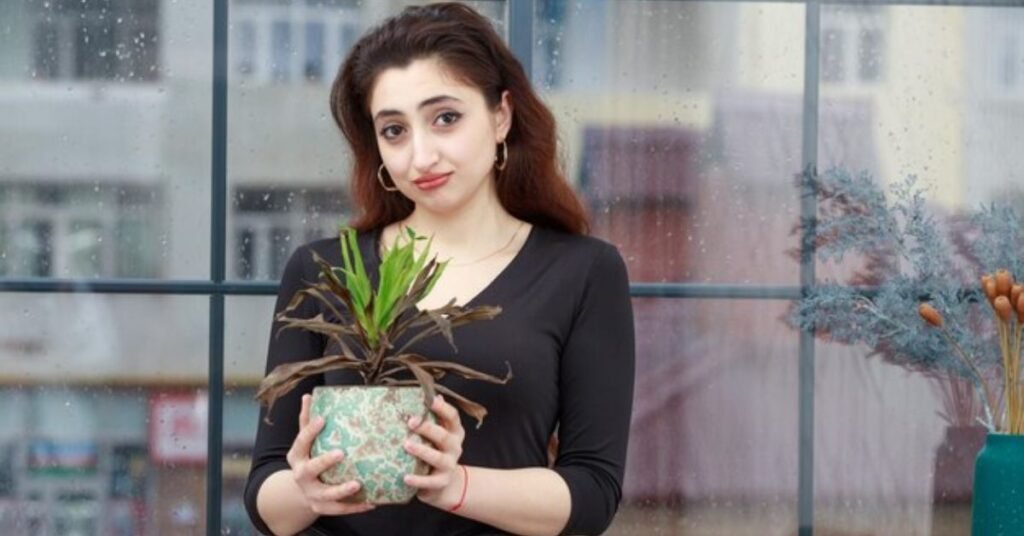Emma Shpaier Ezorim has gained recognition as an innovative leader in urban development and environmental conservation. Her commitment to creating sustainable, resilient cities that integrate green spaces, environmental awareness, and community engagement has inspired widespread appreciation. Through a variety of projects, she works to improve urban living while ensuring harmony with the natural environment. This article explores Emma Shpaier Ezorim’s contributions to urban planning, her key principles, and her impact on sustainable city development.
Who is Emma Shpaier Ezorim?
Emma Shpaier Ezorim is an urban planner, environmental activist, and leader in sustainable development. With expertise in green infrastructure and community-oriented design, she has created projects that prioritize human well-being alongside environmental health. Her holistic approach promotes inclusivity, resilience, and sustainability, making her an influential figure in modern urban planning.
Emma Shpaier Ezorim’s Approach to Sustainable Urban Development
Ezorim’s work centers on three key principles: community-centered design, environmental stewardship, and adaptive urban spaces. She believes urban planning should serve the community while respecting the surrounding ecosystem.
1. Community-Centered Design
Ezorim prioritizes community engagement, actively seeking input from residents to create spaces tailored to local needs. Her projects encourage collaboration between planners and community members, ensuring that urban spaces reflect community values. This participatory approach builds a sense of ownership and improves space functionality for local residents.
2. Environmental Stewardship
A strong advocate for environmental preservation, Ezorim incorporates green infrastructure and eco-friendly practices into every project. Her work includes using sustainable materials, energy-efficient designs, and environmentally responsible landscaping. By integrating these elements, she promotes urban ecosystems that benefit both people and nature.
3. Adaptable Urban Spaces
Recognizing that cities constantly evolve, Ezorim designs adaptable spaces that can change with community needs and environmental shifts. This approach includes flexible spaces for public use, such as multipurpose parks and plazas, allowing diverse activities. Adaptable urban design ensures longevity and relevance in her projects, aligning with future urban needs.
Notable Projects by Emma Shpaier Ezorim
Ezorim’s projects cover a range of initiatives that enhance urban life, improve environmental quality, and support social cohesion. Each project exemplifies her commitment to building sustainable cities for future generations.
1. Greening Urban Parks
Ezorim has led efforts to transform underutilized parks into vibrant green spaces that provide both recreational and ecological benefits. By planting native vegetation, adding walking trails, and installing eco-friendly amenities, her parks improve biodiversity and offer community enjoyment. These green spaces contribute to mental health, fitness, and a stronger connection to nature.
2. Sustainable Housing Projects
Her sustainable housing projects use green building materials, renewable energy, and rainwater harvesting systems. Ezorim addresses affordable housing needs while reducing environmental impact, creating energy-efficient homes accessible to a broader population. These housing developments are model examples of sustainable living, proving that eco-friendly housing can be inclusive and accessible.
3. Community Gardens and Local Food Initiatives
Recognizing the importance of local food sources, Ezorim has developed community gardens that enhance food security and environmental education. These gardens allow residents to grow their food, promoting healthier lifestyles and sustainability. Community gardens foster social connections, educate residents about sustainable practices, and enhance local ecosystems.
Impact of Emma Shpaier Ezorim on Urban Development
Ezorim’s work has influenced urban development by emphasizing the importance of sustainability, inclusivity, and adaptability. Her principles inspire planners, developers, and policymakers to prioritize long-term resilience and environmental balance.
1. Promoting Sustainable Urban Planning
Ezorim’s emphasis on green infrastructure and eco-friendly design has encouraged others in the field to adopt sustainable practices. Her projects demonstrate that cities can meet human needs while respecting environmental limits, showing a blueprint for sustainable urban growth.
2. Enhancing Community Involvement
Her approach to community-centered design has made public participation a valued part of urban planning. By encouraging residents to contribute, she creates spaces that reflect community values and foster civic pride. Ezorim’s method of engaging residents fosters community cohesion and long-term investment in urban spaces.
3. Setting Standards for Resilient Infrastructure
Through adaptable urban spaces, Ezorim promotes resilience, ensuring cities can withstand environmental changes and demographic shifts. Her projects exemplify how resilient infrastructure improves a city’s ability to manage unexpected challenges, making her approach highly relevant in today’s climate-conscious urban planning.
Emma Shpaier Ezorim’s Contributions to Environmental Awareness
Beyond her projects, Ezorim raises awareness about the environmental impact of urban living. Her commitment to educating communities has inspired residents, planners, and leaders to prioritize sustainability in everyday practices.
1. Environmental Education Programs
Ezorim organizes workshops and seminars that teach community members about sustainable practices, such as composting, water conservation, and eco-friendly landscaping. These programs equip residents with knowledge and tools to reduce their environmental footprint. Her educational efforts empower individuals to actively participate in sustainability.
2. Advocacy for Eco-Friendly Policies
Ezorim works with policymakers to advocate for eco-friendly regulations and incentives for sustainable development. She highlights the importance of policies that encourage green building practices and protect urban green spaces. Her advocacy has helped influence policy changes that promote environmentally conscious urban planning.
3. Partnerships with Environmental Organizations
Ezorim collaborates with environmental organizations to amplify her impact, working on joint initiatives that support biodiversity, conservation, and sustainable urban design. These partnerships enhance her projects, providing additional resources and expertise. By collaborating, she strengthens community support for sustainability initiatives.
Challenges and Future Goals for Emma Shpaier Ezorim
Despite her successes, Ezorim faces challenges such as funding constraints, regulatory barriers, and balancing urban growth with environmental preservation. Her future goals include expanding her work to encompass emerging issues like climate resilience and digital urban solutions.
1. Overcoming Funding Limitations
Ezorim’s projects often require substantial investment, which can limit the scale of her initiatives. She seeks partnerships with private and public sectors to fund sustainable projects. Access to funding will enable her to expand the scope and impact of her urban development work.
2. Navigating Regulatory Constraints
Implementing green infrastructure and eco-friendly materials sometimes conflicts with existing urban regulations. Ezorim collaborates with city officials to advocate for regulatory reforms that support sustainable development. She aims to create a regulatory environment that prioritizes environmental goals.
3. Expanding into Climate-Resilient Planning
With climate change concerns rising, Ezorim intends to expand her work into climate-resilient planning. This includes designing spaces that can withstand natural disasters and adapting infrastructure to reduce climate-related risks. Her focus on resilience aligns with her long-term vision of sustainable, adaptable cities.
Conclusion
Emma Shpaier Ezorim has transformed urban planning with her dedication to sustainable, community-centered, and resilient development. Her projects serve as examples of how cities can balance environmental needs with human habitation. By prioritizing green infrastructure, adaptable spaces, and community input, she has reshaped the way we approach urban growth. As cities face environmental challenges, Ezorim’s work provides a valuable framework for sustainable urban planning that benefits people and the planet. Her innovative approach will continue to inspire sustainable urbanism for future generations.
FAQs
1. What is Emma Shpaier Ezorim’s focus in urban planning?
Her focus is on creating sustainable, community-centered spaces that integrate environmental stewardship with urban functionality.
2. How does Ezorim promote environmental awareness?
She offers educational programs, advocates eco-friendly policies, and partners with environmental organizations to inspire sustainable practices.
3. What are some notable projects by Ezorim?
Her projects include green urban parks, sustainable housing, and community gardens that encourage local food production and healthy living.
4. What challenges does Ezorim face in her work?
She faces challenges like funding limitations, regulatory restrictions, and balancing urban growth with environmental preservation.
5. What are Ezorim’s future goals?
Ezorim aims to expand into climate-resilient planning, addressing emerging environmental challenges and advancing her commitment to sustainable development.



